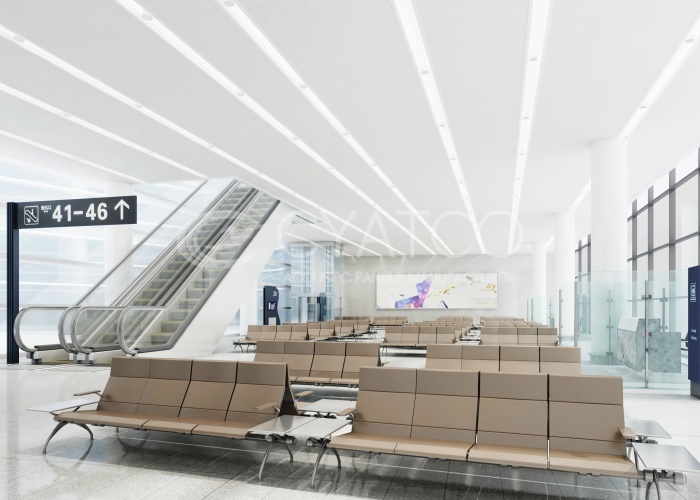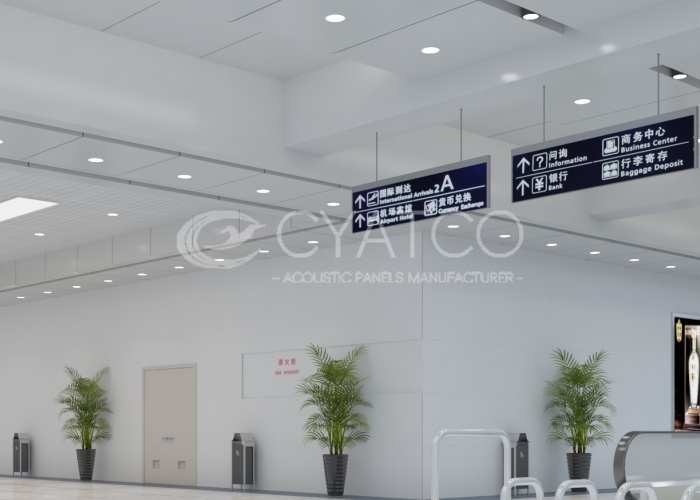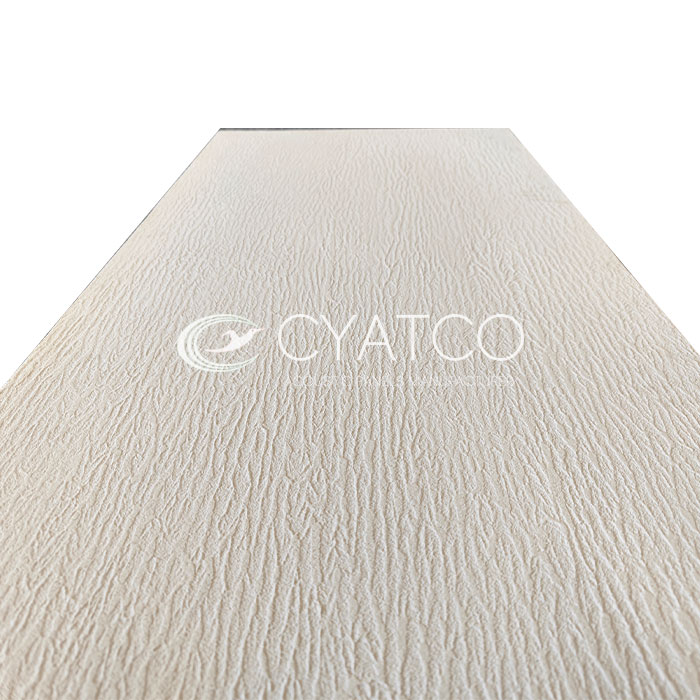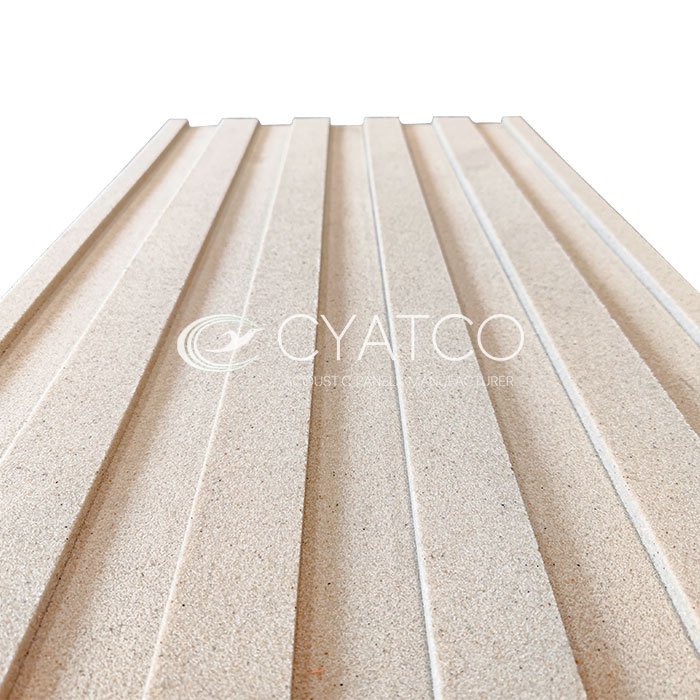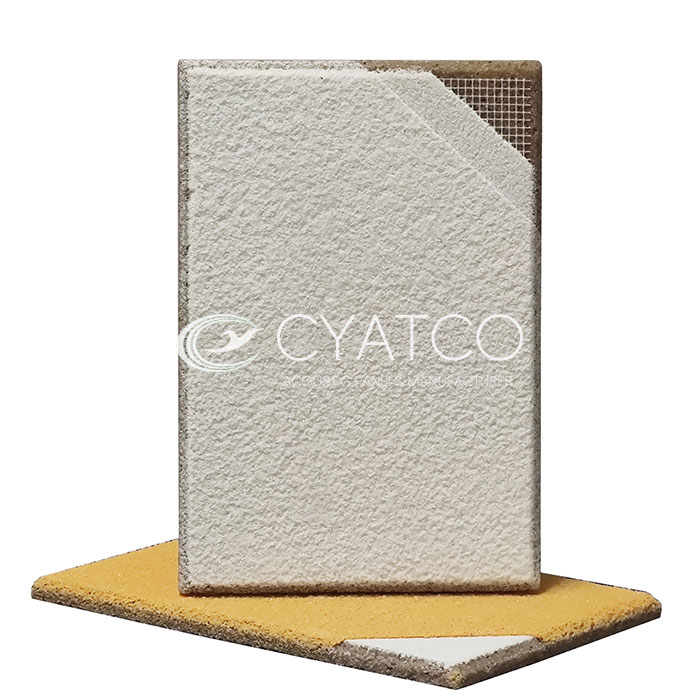The Compatibility of Sandstone Seamless Acoustic Panel with Acoustic Treatment in Airport Terminal Hall & Train Station Concourse
Airport terminal halls and train station concourses, as large public transportation hubs, are characterized by high passenger density, complex noise sources, and open spaces. Acoustic treatment in these areas must balance noise reduction, speech clarity enhancement, spatial comfort, and safety.
I. Core Acoustic Design Requirements for Airport Terminal Hall & Train Station Concourse
- Noise Control: Broadcast announcements, crowd noise (e.g., footsteps, luggage dragging, conversations), and equipment operation sounds (e.g., conveyor belts, HVAC systems) combine to create high background noise levels.
- Speech Clarity Optimization: Public address systems must convey flight and train information, avoiding miscommunication caused by reverberation or noise interference.
- Fire Safety and Environmental Compliance: Public spaces require materials with high fire resistance ratings (Class A) and no harmful emissions (e.g., formaldehyde) to ensure passenger health and safety.
- Durability and Maintenance: Acoustic materials must be wear-resistant, impact-resistant, moisture-proof, and mold-resistant to withstand high foot traffic and harsh conditions.
II. Advantages and Compatibility of Sandstone Seamless Acoustic Panels
1. Superior Broadband Sound Absorption
- Porous Structure: Composed of natural mineral particles and inorganic binders, sandstone seamless acoustic panels feature a microporous structure that efficiently absorbs mid-to-high-frequency noise (500–4000 Hz), reducing reflections from broadcasts and crowd noise.
- Resonance Absorption Design: Cavity structures enhance low-frequency absorption (50–250 Hz), targeting noise like footsteps and luggage dragging.
- Noise Reduction Coefficient (NRC): Exceeds 0.95, covering full-frequency noise and significantly improving acoustic environments.
2. Fire Safety and Environmental Performance
- Class A Fire Rating: Inorganic core materials comply with GB 8624-2012 (Chinese standard for building material combustion performance), making them ideal for high-traffic public spaces.
- E0 Environmental Standard: Formaldehyde-free, meeting indoor decoration requirements and safeguarding passenger health.
3. Durability and Maintenance
- Moisture and Frost Resistance: Suitable for humid climates (e.g., rainy southern regions), resistant to mold and cracking, with a long lifespan.
- Impact Resistance: High surface hardness withstands luggage collisions and cleaning tool abrasion.
- Easy Cleaning: Smooth surfaces repel dust, simplifying maintenance.
4. Installation Flexibility and Aesthetics
- Lightweight yet Strong: Easy to install on ceilings or walls without deformation.
- Customizable Designs: Available in various colors, textures, and patterns to match modern, minimalist, or tech-inspired interior themes.
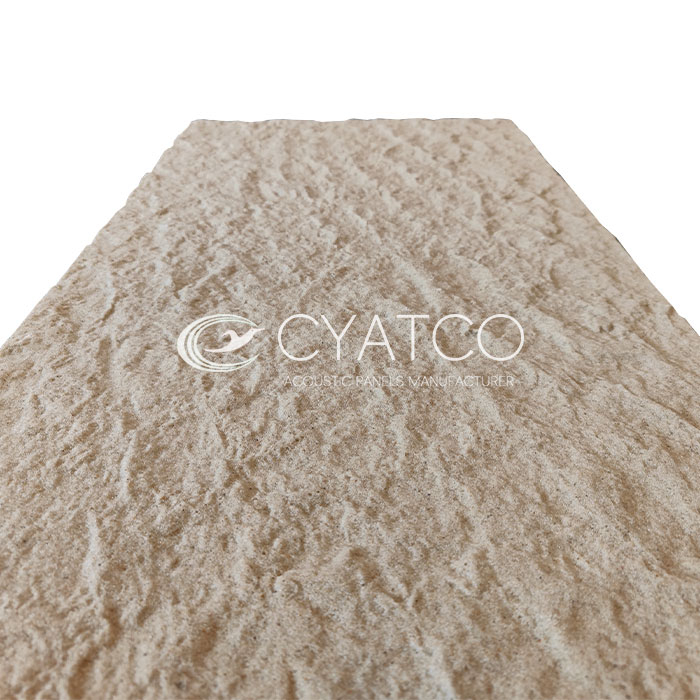
III. Applications of Acoustic Panels in Airport Terminal Hall & Train Station Concourse
- Ceiling: Absorb overhead reflections, reduce reverberation, and enhance broadcast clarity.
- Wall: Minimize wall reflections and optimize sound field uniformity, especially near speakers and seating zones.
- Column: Prevent sound from focusing by covering columns with acoustic panels.
IV. Conclusion
Sandstone seamless acoustic panels are highly compatible with the acoustic needs of airport terminal halls and train station concourses. Their key advantages include:
- Full-Frequency Sound Absorption: Targets both low-frequency noise and mid-to-high-frequency reverberation.
- Safety and Sustainability: Meets Class A fire and E0 environmental standards.
- Durability and Low Maintenance: Withstands high traffic and harsh conditions, reducing long-term costs.
- Aesthetic Versatility: Custom designs elevate spatial quality.
While sandstone seamless acoustic panels may have a higher upfront cost than conventional materials, their superior performance and low lifecycle costs make them ideal for demanding public spaces. With thoughtful design, they can significantly improve acoustic environments, enhancing passenger comfort and information delivery efficiency.


